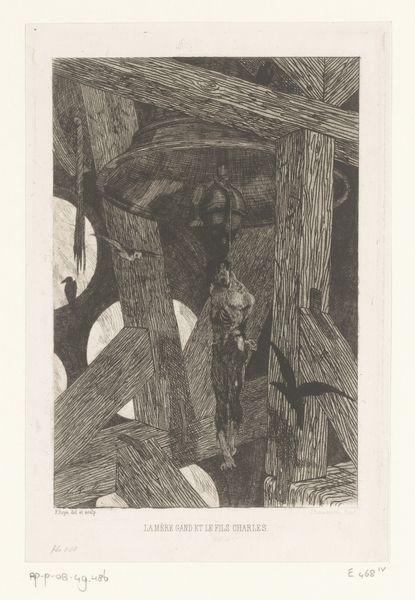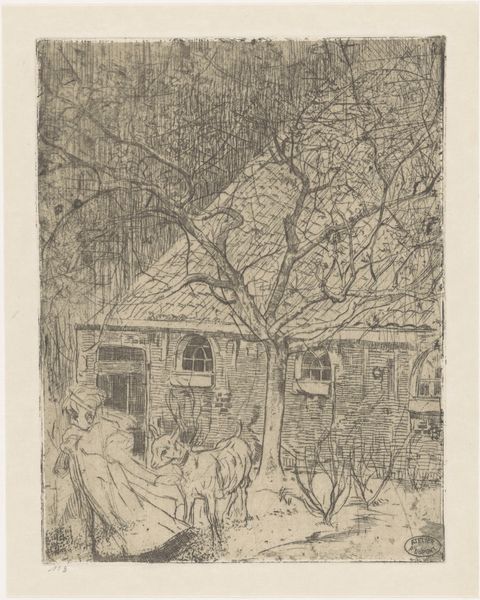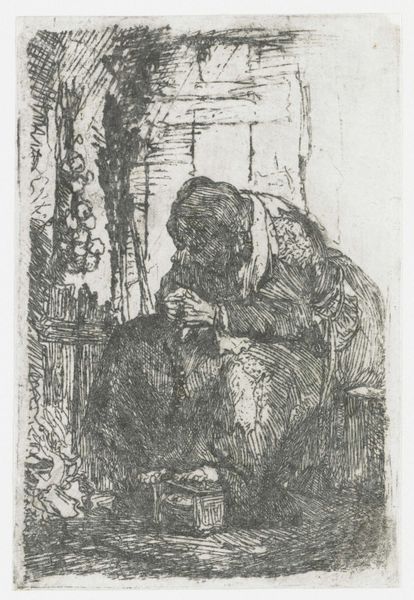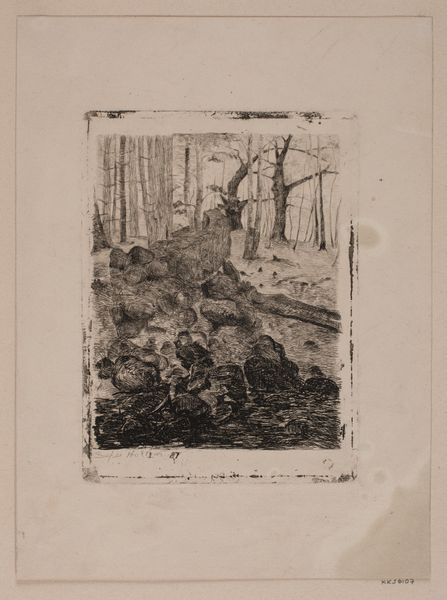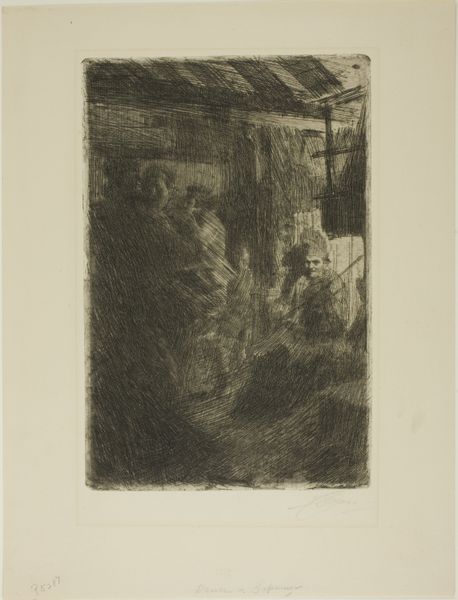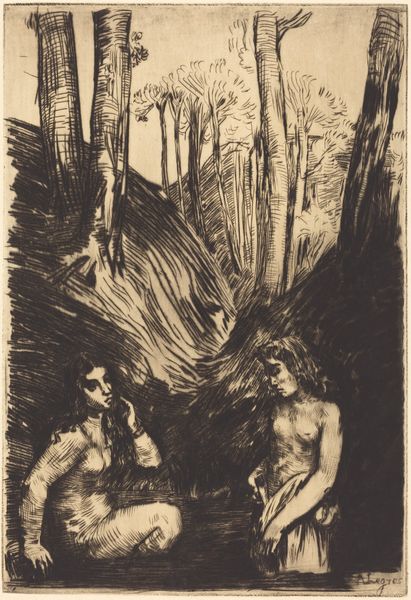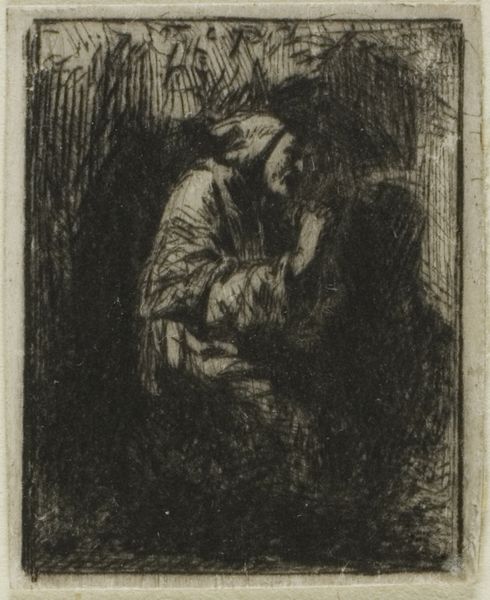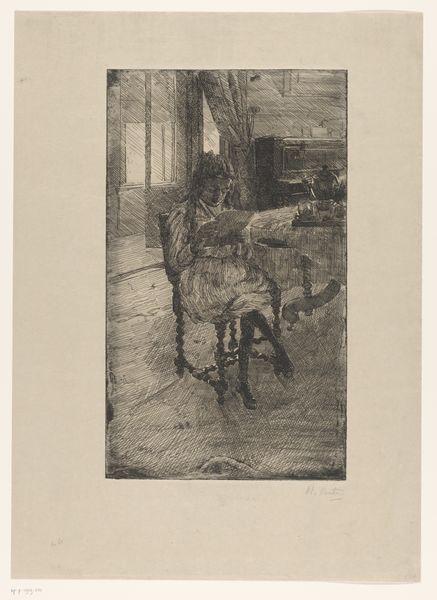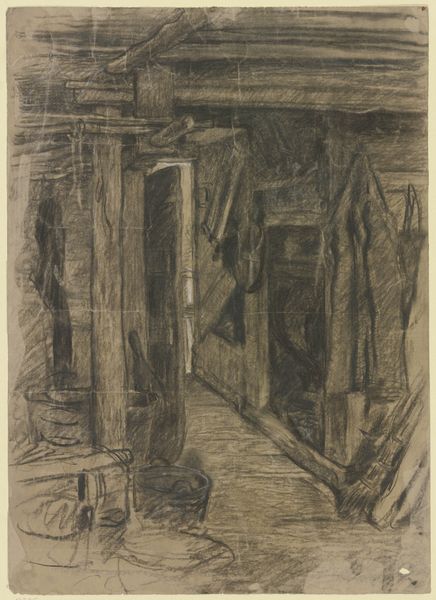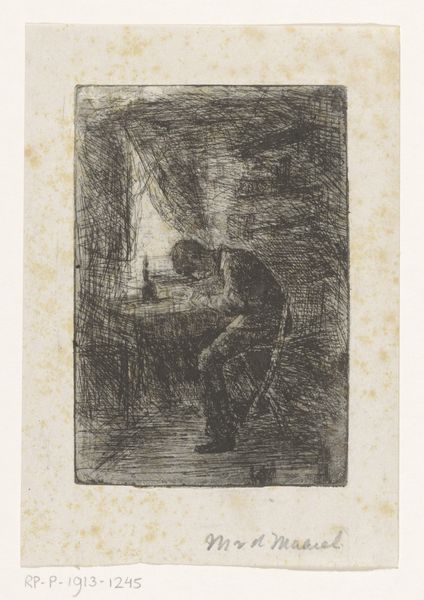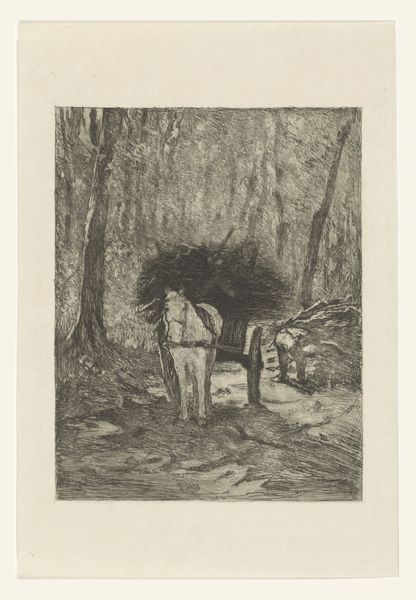
drawing, pencil
#
pencil drawn
#
drawing
#
impressionism
#
pencil sketch
#
landscape
#
charcoal drawing
#
pencil drawing
#
pencil
#
genre-painting
Dimensions: height 163 mm, width 116 mm
Copyright: Rijks Museum: Open Domain
Curator: Standing before us is "Vrouw doet de was op een erf," or "Woman Doing Laundry in a Yard," created in 1888 by Philip Zilcken. It’s currently held here at the Rijksmuseum. Editor: Immediately, I’m struck by the labor involved in this simple scene. The roughness of the sketch gives the impression that washerwoman's work is endless, arduous, yet she is diligent at this basic work. The materiality of work rendered materially by sketching! Curator: Absolutely, it echoes traditional imagery of the domestic sphere, particularly images of women performing their repetitive daily tasks. Water as cleansing ritual, but what burdens are literally cleansed away? Notice how the artist chose genre-painting. Editor: The image's strength rests on his manipulation of line and form, rendering an accurate picture. Zilcken’s choice to represent such a quotidian moment begs the question: to whom was this image of manual work in rural Netherland intended? This piece seems created with only the simple tools on hand, using sketches and rough materials in harmony with labor that is the subject of the art itself! Curator: That is exactly the point. In art we often find that water acts like a metaphorical tool used to illustrate a form of baptism where things have now come full circle again. Perhaps she wants rebirth. She cleans to reset everything to neutral and restore her sense of place, hope, and memory. In its symbolic content, the water and clean cloth here suggest not only literal but also symbolic renewal of her place and mind. Editor: Indeed, though I'm most interested in understanding what makes this artist believe that those actions must be shared to publicize what should happen behind closed door. Curator: In his landscapes, Zilcken aimed to depict the everyday existence of people while celebrating it. Even through those daily grindings. The art serves the culture's psychological state. Editor: He certainly foregrounds materiality and technique here, and now when I look more carefully I also get a renewed respect for the women and their unseen labor through this art itself.
Comments
No comments
Be the first to comment and join the conversation on the ultimate creative platform.
